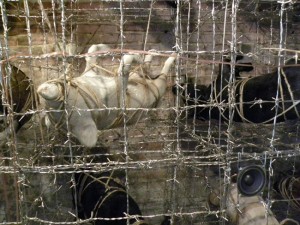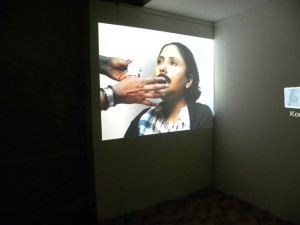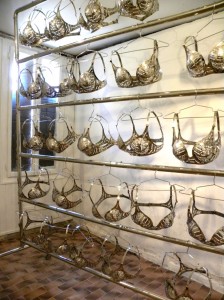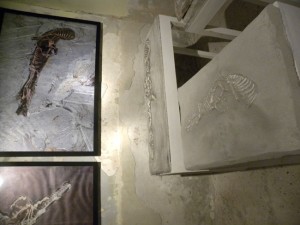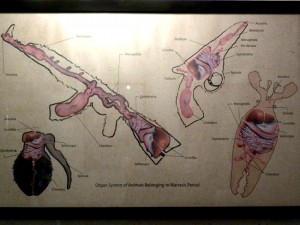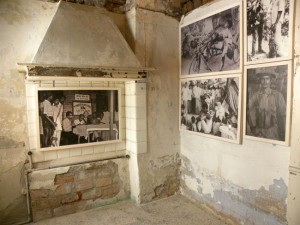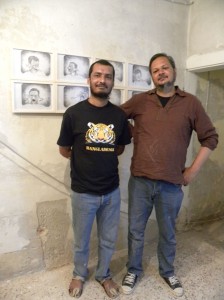Venice Biennale Part 5 Bengladesh
This pavilion was adjacent to the Iraqi pavilion on Via Garibaldi also in the Foundation Gervasuti. Five artists are included. Each is using a different medium and addressing an entirely different subject. These artists are the contemporary heirs to a long tradition of art in this part of India, as explained in the curatorial statement by Mohamed Mijarul Quayes Those familiar with the history of art in the last century will be familiar with the Tagore family during the late Raj. Bengali artists turned to a new synthesis of early Indian art traditions, rejecting the academic art styles brought by the British colonizers.
The five artists in the Bengali pavilion today are far removed from those years, but they also show a willingess to depart from accepted norms, to reinvent new ways of thinking about old ideas. Perhaps most dramatic is the installtion by Mahbubur Rahman’s I was told to say the words
The installation is shocking even horrifying, you may wonder why I even included it: an image of pigs covered in the skin of cattle and goat, inside cages of barbed wire. He is addressing the attitudes to domestic animals in Bengladesh, cows are domesticated, but not pigs. The installation confronts us with a horrifying vision of animals trapped in the skin of another, the contradictions of our perceptions of one animal and another based on social or religious conventions. These animals are projections of prejudice and social acts, they are symbols of ideas that do not make any rational sense, or which cannot conform with civilized perspectives.
Tayeba Begum Lipi has two works, I wed Myself, shows the artist dressing for a wedding as both the male and the female ( I show only one side here)
The other is a room size installation of oversize bras made of razor blades. Both address gender issues and the contradictions in all societies betwen constructed identity, traditional attitudes to women and the realities of women. The razor blades are threatening anyone who encounters them, an armor of protection to any woman who wears such a bra.
The Utoipan Museum by Imran Hossain Piplu imagined the finds of a future archeological excavation of our contemporary culture which he refers to as the Warassic Era from 1600 – 2000 AD in which all the artifacts were different type of munitions. But in his imaginary excavation the guns themselves have skeletal remains. So anyone who is reconstructing our society will recognize our main obsession with weapons, but they will also be relics of a past age. When they are discovered they will all be obsolete and unknown so the artifacts will have to be deciphered as carefully as today’s archeologists decipher the fossils of ancient geological eras. The combination of science and war with art was provocative.
These were the artists who were the most striking in the installation. In addition it included a photograph installation by Promotech Das Pulak Echoed Moments in Time, photographs of ruined sites of historical signficance in which the artist has inserted himself.
and the work of Kabir Ahmed Masum Chisty, a video, drawing installation related to the theme of Medusa
One of the pleasures of the Venice Biennale is to meet artists from all over the world. It reminds me of the fact that living in the US we are incredibly self absorbed and narrow in our daily thinking. When we think of the rest of the world it is almost inevitably in terms of war and terrorism. The Utopian Museum by Imran Hossain Piplu reminds us of that fact, while the other artists provide intersections with concerns of cultures everywhere, gender, history, and myth.
This entry was posted on June 25, 2011 and is filed under Venice Biennale Bengladesh.

